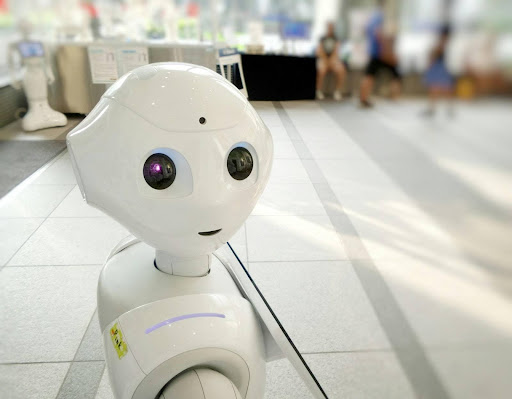
Learning about robotics can be a rewarding yet challenging experience. The field is ever-evolving and there’s always something new to pickup. As with any discipline, students need to track how far they’ve come, establish benchmarks and measure progress. It’s the only way they can master the skills required to design, build and program robots. Here’s how to go about it.
There’s More to Learning Than Completing Course Work
Robotics encompasses a wide range of domains, including mechanics, electronics, machinery and most recently, artificial intelligence algorithms.
Measuring student success in these complex subjects requires a holistic framework that considers more than just grades or test scores. True mastery of core concepts demands real-world application and practical contributions to the field. This hands-on approach fosters more profound understanding and knowledge retention, making learning more enjoyable.
Transforming educational robotics into an experiential endeavour also makes tracking milestones and identifying learning gaps easier, so students can benefit from a more rounded experience.
4 Steps to Measuring Student Success in Robotics
Robotics is becoming increasingly popular, equipping students with valuable skills and preparing them for exciting careers in STEM fields. Follow these steps to help you assess study proficiency.
1. Define Learning Objectives
Defining the learning objectives is the first step to measuring success in any educational venture. What are they trying to achieve by studying robotics? What skills do they want to develop? Depending on their level, learning objectives might vary from understanding the basics to solving real-world problems or participating in competitions.
It’s also important to factor in the criteria and standards they have to meet. Different states and institutions have unique requirements. For instance, the Utah Education Board requires students intending to study robotics to pass a basic safety test with zero errors before handling equipment. These considerations are vital for establishing baselines and measuring learning outcomes.
2. Leverage Rubrics Assessments
A rubric is a specialized scoring guide that assesses components and expectations for a particular type of work or performance based on specific criteria and levels.
This tool can cover various aspects of robotics programming, including the systemic process, the final product and presentation. For example, schools might employ a rubric to rate a robot’s design and functionality on a predefined scale from 1-7 with detailed descriptions of what each level entails. You can utilize existing rubrics tools, such as those from the LEGO Education or the BHP Foundation.
“Rubrics can be used to assess different aspects of robotic design and programming on a predetermined scale.”
3. Track Data and Results
Another way to measure student progress in robotics education is to collect and analyze data that support learning goals. That means tracking specific features, such as the robot’s speed, accuracy and overall efficiency. Several tools, such as IoT sensors, timers, counters or specialized software, are available to gather and process relevant data about robot performance.
You can also employ physical observation and surveys to better understand how well a robotic project is progressing, especially in a group setting. For example, a class survey can reveal students’ engagement with a particular coding task, which is essential to their success. The results from the analyzed data can then be used to compare against benchmarks and refine areas of improvement.
4. Incorporate Peer Assessments
Peer review is the backbone of scientific innovation. Students can excel individually at robotics, but without critical review and consensus from their peers, they cannot be certain about the project’s viability and relevance. These assessments involve students objectively giving and receiving feedback from their colleagues about their robot designs or specific aspects of the project.
In addition to substantiating the quality and integrity of scholarly work, peer reviews foster collaboration and communication, which can further enhance innovation among students.
“Peer assessment is essential to ensuring the credibility and relevance of scientific research.”
Integrate Metrics Into Educational Strategic Planning
To be effective, these success metrics must be interwoven into the institution’s strategic planning. Once ingrained in the foundation, it becomes a standard by which future achievements are measured.
“Strategic planning allows school leaders to determine more effective ways to streamline processes and make informed decisions.”
Across the education sector, strategic plans are more likely to be implemented when one person is in charge. The same principle applies to learning institutions and individual students. Anyone interested in studying robotics must take responsibility for their learning and recovery from temporary setbacks.
Of course, schools must also recognize that everyone has varying levels of skills in the subject and should make plans to provide individualized support so struggling students can catch up. Personalized learning also transforms students into the heroes of their own stories, driving them to push past barriers and maximize their potential.
Promote Effective Robotics Learning
Measuring success in robotics ensures that students are acquiring the necessary skills and experience to excel in the field. It also helps educators identify gaps in understanding and obtain a clearer picture of each student’s proficiency level, allowing them to provide personalized support each step of the way.
Also Read How AI Is Creating a New Digital Divide in Schools
- SEO Powered Content & PR Distribution. Get Amplified Today.
- PlatoData.Network Vertical Generative Ai. Empower Yourself. Access Here.
- PlatoAiStream. Web3 Intelligence. Knowledge Amplified. Access Here.
- PlatoESG. Carbon, CleanTech, Energy, Environment, Solar, Waste Management. Access Here.
- PlatoHealth. Biotech and Clinical Trials Intelligence. Access Here.
- Source: https://www.aiiottalk.com/how-do-you-measure-student-success-in-robotics/
- :has
- :is
- $UP
- a
- About
- about IT
- accuracy
- Achieve
- achievements
- acquiring
- addition
- against
- AI
- algorithms
- Allowing
- allows
- also
- always
- among
- an
- analyze
- analyzed
- and
- any
- anyone
- Application
- applies
- approach
- ARE
- areas
- artificial
- artificial intelligence
- AS
- aspects
- assess
- assesses
- assessment
- assessments
- At
- available
- Backbone
- barriers
- based
- basic
- Basics
- BE
- becomes
- becoming
- before
- benchmarks
- benefit
- Better
- board
- build
- but
- by
- CAN
- cannot
- careers
- Catch
- certain
- challenging
- charge
- class
- clearer
- Coding
- collaboration
- colleagues
- collect
- come
- Communication
- compare
- Competitions
- completing
- complex
- components
- concepts
- Consensus
- considerations
- considers
- contributions
- Core
- counters
- Course
- cover
- Creating
- Credibility
- criteria
- critical
- data
- decisions
- define
- demands
- Depending
- Design
- designs
- detailed
- Determine
- develop
- different
- digital
- discipline
- divide
- do
- domains
- driving
- each
- easier
- Education
- educational
- educators
- Effective
- efficiency
- Electronics
- encompasses
- engagement
- enhance
- enjoyable
- ensures
- ensuring
- equipment
- Errors
- especially
- essential
- establish
- establishing
- everyone
- example
- Excel
- exciting
- existing
- expectations
- experience
- experiential
- factor
- far
- Features
- feedback
- field
- Fields
- final
- First
- follow
- For
- Foster
- fosters
- Foundation
- Framework
- from
- functionality
- further
- future
- gaps
- gather
- Giving
- Go
- Goals
- Group
- guide
- Handling
- hands-on
- Have
- help
- helps
- holistic
- How
- How To
- HTTPS
- identify
- identifying
- important
- improvement
- in
- Including
- incorporate
- increasingly
- individual
- Individually
- informed
- ingrained
- Innovation
- instance
- institutions
- integrity
- Intelligence
- Intending
- interested
- into
- involve
- iot
- IT
- jpg
- just
- knowledge
- leaders
- learning
- Level
- levels
- Leverage
- likely
- machinery
- make
- MAKES
- Making
- master
- Maximize
- means
- measure
- measured
- measuring
- mechanics
- Meet
- Metrics
- might
- Milestones
- more
- most
- must
- necessary
- Need
- New
- objectively
- objectives
- observation
- obtain
- of
- on
- once
- ONE
- only
- or
- outcomes
- overall
- own
- participating
- particular
- pass
- past
- peer
- peers
- performance
- person
- Personalized
- physical
- Pickup
- picture
- planning
- plans
- plato
- Plato Data Intelligence
- PlatoData
- Popular
- potential
- Practical
- predefined
- preparing
- presentation
- principle
- problems
- process
- processes
- Product
- proficiency
- profound
- Program
- Programming
- Progress
- progressing
- project
- projects
- provide
- Push
- quality
- range
- Rate
- Read
- real world
- receiving
- recently
- recognize
- recovery
- refine
- relevance
- relevant
- required
- Requirements
- requires
- research
- responsibility
- Results
- retention
- reveal
- review
- Reviews
- rewarding
- robot
- robotics
- robots
- Safety
- same
- Scale
- School
- Schools
- scientific
- scores
- scoring
- sector
- sensors
- Setbacks
- setting
- several
- should
- skills
- So
- Software
- Solving
- something
- specialized
- specific
- speed
- standard
- standards
- States
- Stem
- Step
- Steps
- Strategic
- streamline
- Struggling
- Student
- Students
- Study
- Studying
- subject
- success
- such
- support
- Survey
- systemic
- Take
- Task
- temporary
- test
- than
- that
- The
- The Basics
- their
- Them
- then
- These
- they
- this
- those
- to
- tool
- tools
- track
- Tracking
- transforms
- true
- trying
- type
- understand
- understanding
- unique
- used
- utah
- Valuable
- various
- vary
- varying
- venture
- viability
- vital
- want
- Way..
- ways
- WELL
- What
- when
- which
- wide
- Wide range
- with
- without
- Work
- yet
- You
- zephyrnet
- zero













